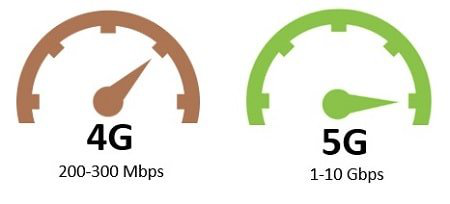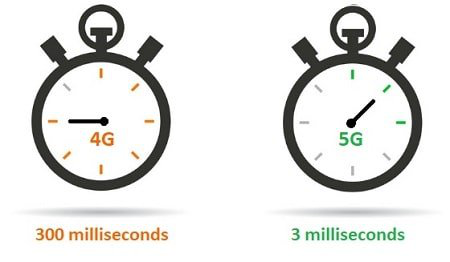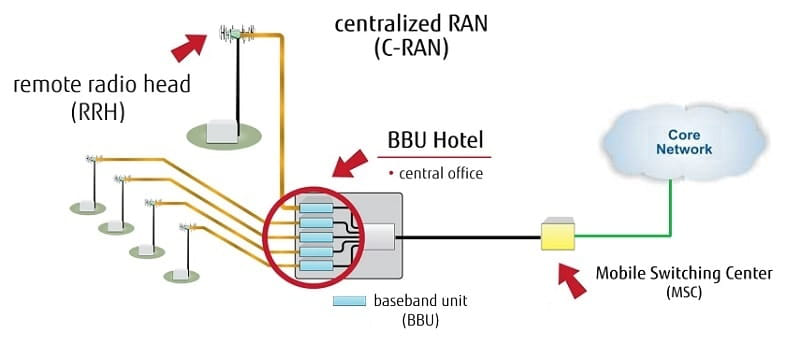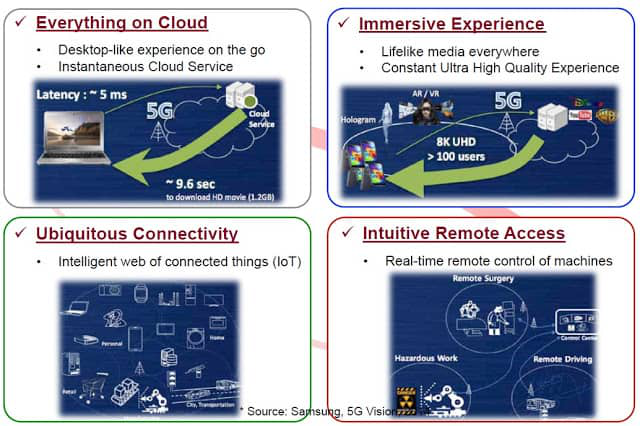3G-The third generation of mobile networks has revolutionized the way we use mobile devices to communicate. 4G networks have been enhanced with higher data rates and user experiences. 5G will be able to provide mobile broadband up to 10 Gigabits per second with low latency of a few milliseconds.
Do you know what are the major difference between 4G and 5G?
Speed
When it comes to 5G, speed is the first thing everyone is excited about with technology. LTE advanced technology can provide data rates up to 1 GBPS on 4G networks. 5G technology will support data rates up to 5 to 10 GBPS on mobile devices and will support data rates above 20 GBPS during the test.

5G can support data-intensive applications such as 4K HD multimedia streaming, augmented reality (AR) and virtual reality (VR) applications. In addition, by using millimeter waves, the data rate in future 5G networks can be increased to more than 40 GBPS, or even up to 100 GBPS.
Compared to the lower bandwidth bands used in 4G technology, millimeter wave bandwidth is much wider. With higher bandwidth, higher data rates can be achieved.
Latency
Delay is a term used in network technology to measure the delay of a signal packet from one node to another. In a mobile network, it can be described as the time it takes for a radio signal to travel from a base station to a mobile device (UE), and vice versa.

4G networks have a latency range of 200 to 100 milliseconds. During 5G testing, engineers were able to achieve and demonstrate lower latency of 1 to 3 milliseconds. Low latency is very important in many mission-critical applications, so 5G technology is suitable for low latency applications.
For example: self-driving cars, remote surgery, drone operations, etc ...
Advanced Technology

To achieve ultra-fast and low-latency services, 5G must use advanced network terms such as millimeter wave, MIMO, beamforming, device-to-device communication, and full-duplex mode.
Read five network technologies that make 5G possible
Wi-Fi offloading is also another suggested method in 5G, which can improve data efficiency and reduce the load on base stations. A mobile device can connect to an available wireless LAN and perform all operations (voice and data) without having to connect to a base station.
4G and LTE advanced technologies use modulation techniques such as Quadrature Amplitude Modulation (QAM) and Quadrature Phase Shift Keying (QPSK). In order to overcome some of the limitations in 4G modulation schemes, higher state amplitude phase shift keying is one of the considerations for 5G technology.
Network architecture
In earlier mobile networks, the radio access network was located close to the base station. Traditional RAN is complex, requires expensive infrastructure, is regularly maintained, and has limited efficiency.

5G technology will use the Cloud Radio Access Network (C-RAN) to increase efficiency. Network operators can provide ultra-fast internet from a centralized cloud-based radio access network.
Internet of Things
The Internet of Things is another important term often discussed in 5G technology. 5G connects billions of devices and smart sensors to the Internet. Unlike 4G technology, 5G networks will be able to process massive amounts of data from many applications such as smart home, industrial IoT, smart healthcare, smart cities, and more.
Another major application of 5G is machine-to-machine type communication. With advanced low-latency 5G services, autonomous vehicles will be the road of the future.
For narrowband-Internet of Things (NB-IoT) applications, such as smart lighting, smart meters and smart parking solutions, weather maps will be deployed using 5G networks.
Ultra Reliable solutions
Compared with 4G, future 5G equipment will provide always-connected, ultra-reliable and efficient solutions. Qualcomm recently introduced 5G modems for smart devices and future personal computers.

5Gwill be able to handle massive amounts of data from billions of devices, and the network will scale for upgrades. 4G and current LTE networks have limitations in terms of data volume, speed, latency, and network scalability. 5G technology will be able to solve these problems and provide cost-effective solutions for service providers and end users.